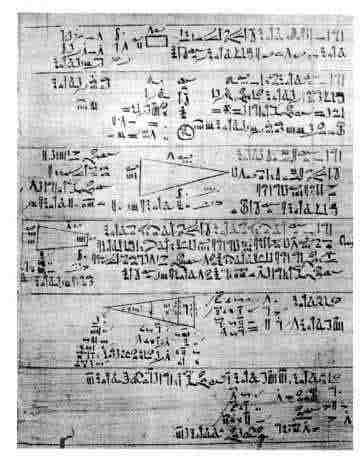1650 BC there is good evidence that 4x(8/9)2
=3.16 was used as an approximation for Pi.
First theoretical calculation seems to have been carried
out by Archimedes of Syracuse (287-212 BC). He obtained the
approximation
223/71 < Pi < 22/7.
Aside: Archimedes who discovered buoyancy didn't like to bath. Carried
to the baths by his colleagues because he stunk. We no longer do this,
we don't care if a colleague stinks.
The Series
Attributed to Gottfried Leibniz but it seems to have
been first proposed by James Gregory (1638-1675). Very slow to
converge, 10,000 terms for 4 decimal places of accuracy.
9 terms of decimal
accuracy is roughly equivalent to estimating a the circumference of a
circle with a polygon with 390,000 sides, done in 1579 by
Francoise Viete.
John Machin in 1706 provided the following
formula, referred to by his name:
pi/4 = 4 arctan(1/5) - arctan(1/239)
It is much more
accurate than the above two, and, for example, if 10 terms are
used the value 3.1415926535897918 is given which is correct to 14
decimal places.
Proved to be irrational by the Johann Lambert in 1761.
In 1882,
Carl Louis Ferdinand von Lindemann proved that pi is a transcendental
number.
The symbol pi was first used with its present meaning by the Welsh
mathematician William Jones in 1706.
Leonhard Euler adopted the
notation in 1737 and it quickly became standard.
In June 1995, the Yasumasa Kanada found pi correct to
3,221,220,000 decimal places.
Many mnemonics have been invented to help remember the decimal
representation of pi. The following one gives the first 15 digits: "How
I want a drink, alcoholic of course, after the heavy lectures involving
quantum mechanics." Each word is replaced by the number of letters in
it. Thus, pi = 3.14159265358979...
1897 Indiana's General Assembly considered Bill No. 246
to legislate the value of pi. The value considered was sixteen divided
by the square root of 3, which equals 9.2376... which isn't even close!
Luckily, a professor from Purdue happened to be at the capitol when
this bill was introduced, and he advised the senators of their
error. (Really they were after 16/root3/3 which is much closer
(3.07ish))
The formula for the volume of a cylinder leads to the mathematical
joke: "What is the volume of a pizza of thickness
a and radius z?" Answer: _______.
Back Next



